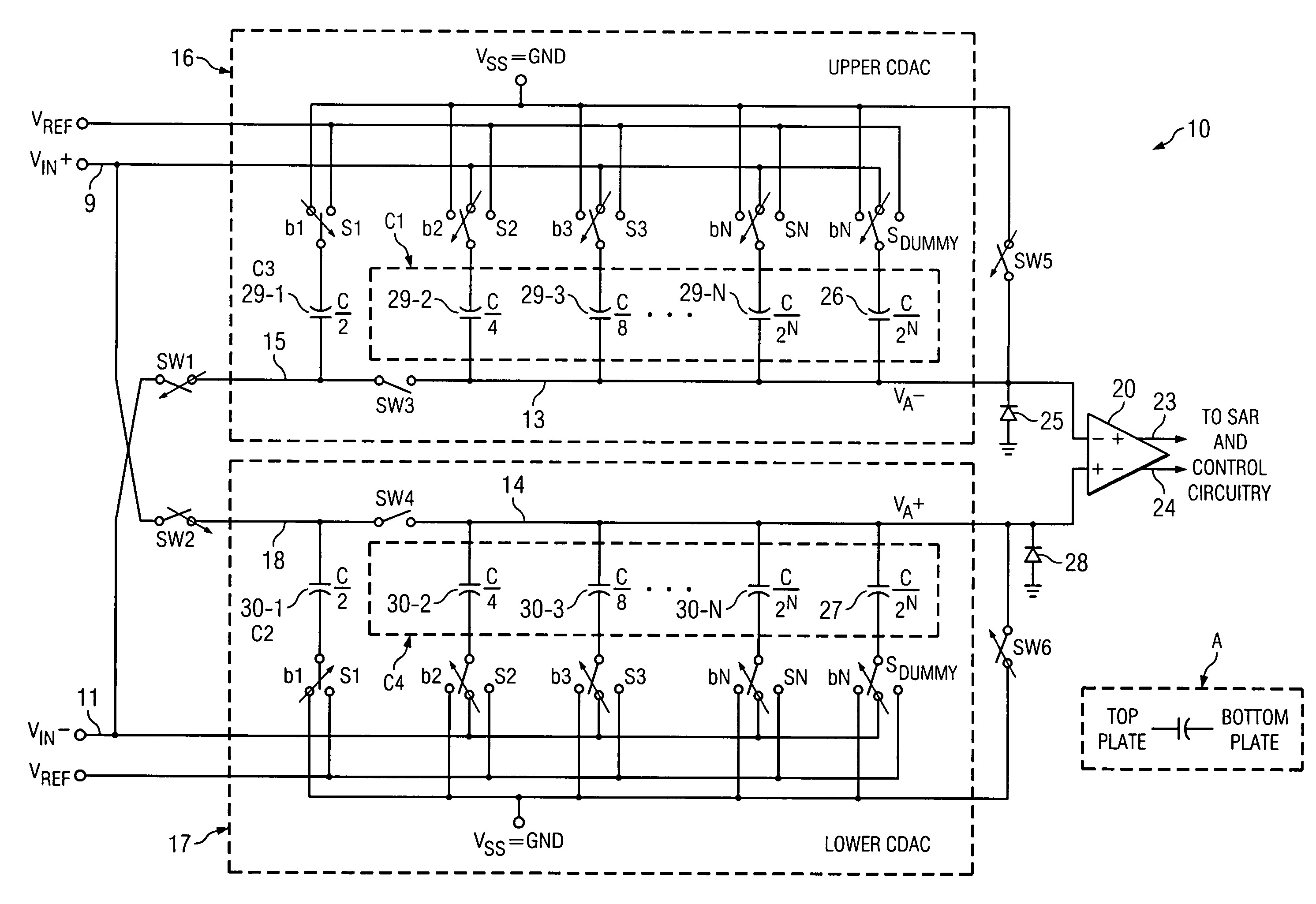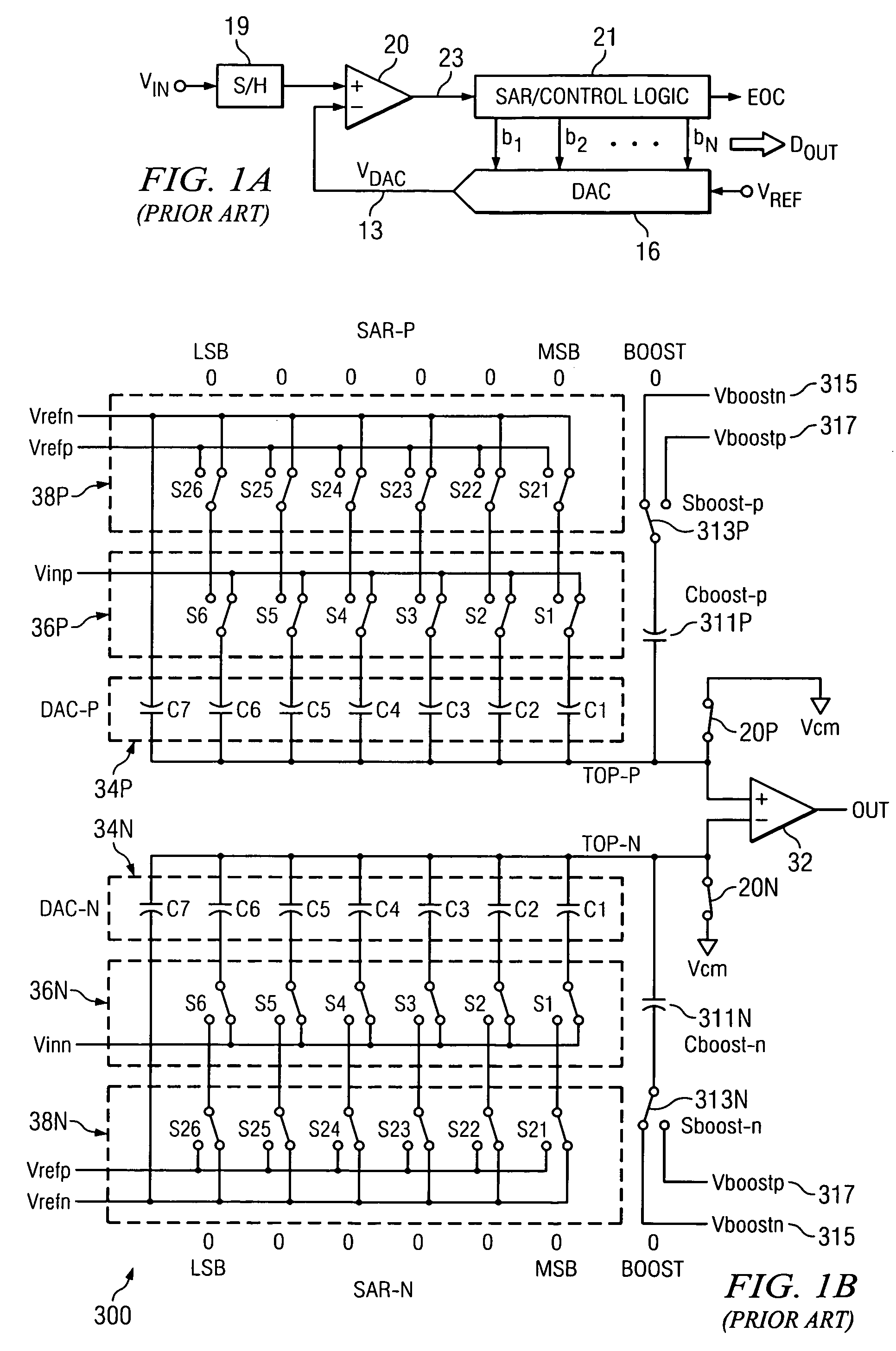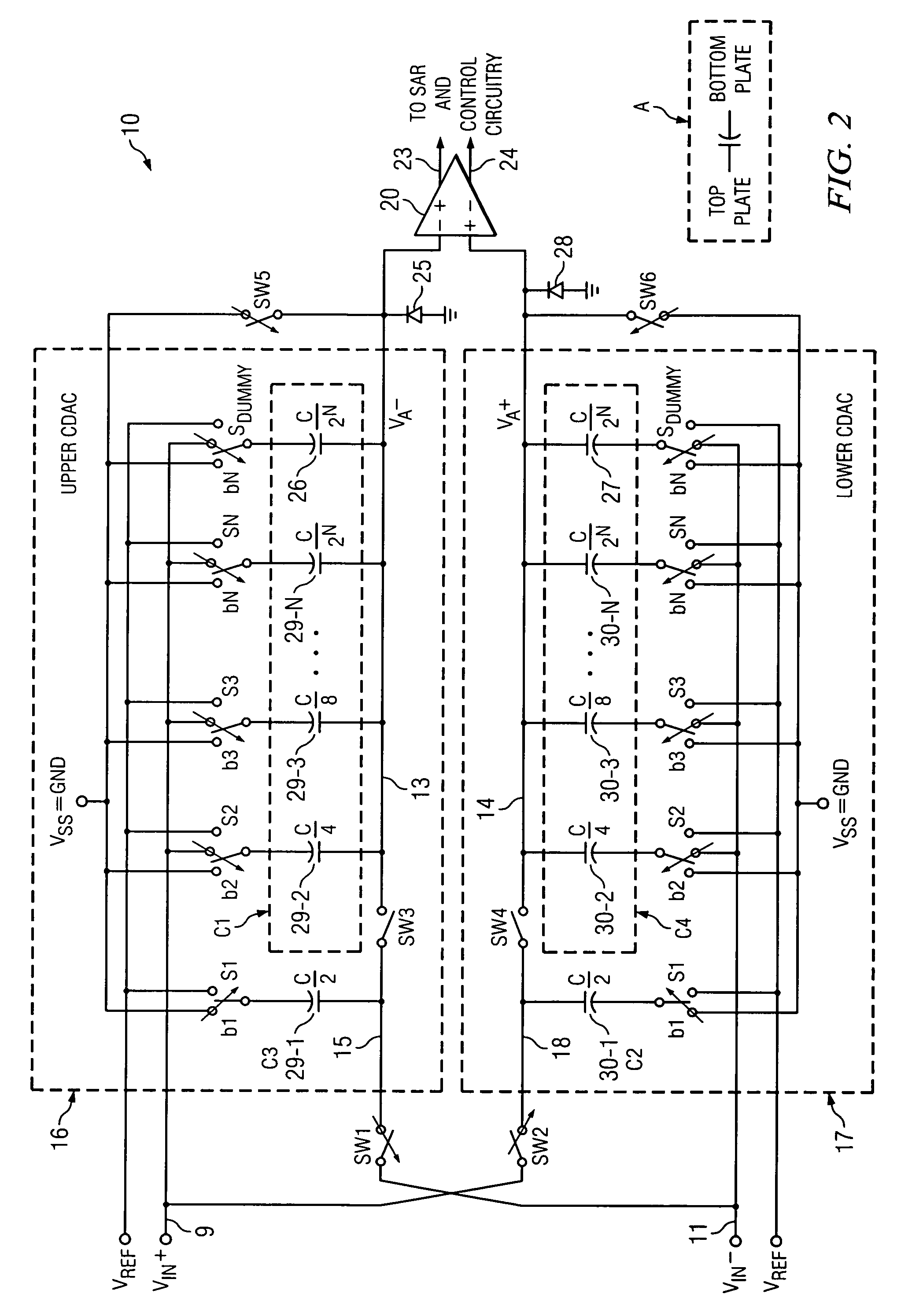Zero-power sampling SAR ADC circuit and method
- Summary
- Abstract
- Description
- Claims
- Application Information
AI Technical Summary
Benefits of technology
Problems solved by technology
Method used
Image
Examples
Embodiment Construction
[0053]Referring to FIG. 2, SAR ADC 10 includes an upper CDAC (capacitor digital to analog converter) 16, a lower CDAC 17, and a conventional comparator 20. SAR ADC 10 also includes conventional SAR and control logic circuitry, such as SAR / control logic 21 shown in Prior Art FIG. 1. A differential analog input voltage VIN+−VIN− is applied between input conductors 9 and 11.
[0054]Upper CDAC 16 includes N binary weighted capacitors 29-1,2 . . . N, a dummy capacitor 26, N switches S1, S2 . . . SN, and a dummy switch SDUMMY. (In one implementation, N is equal to 16 (or equivalent to 16, for example, if conventional scaling capacitors are used). Capacitor 29-1 is the MSB capacitor of upper CDAC 16, and has its “top plate” connected to conductor 15 and its “bottom plate” connected to the pole terminal of switch S1. (Note the symbol “A” shown in FIG. 2 for a CDAC capacitor indicating which plate is the “top plate” and which plate is the “bottom plate”.) The remaining capacitors 29-2,3 . . . ...
PUM
 Login to View More
Login to View More Abstract
Description
Claims
Application Information
 Login to View More
Login to View More - R&D
- Intellectual Property
- Life Sciences
- Materials
- Tech Scout
- Unparalleled Data Quality
- Higher Quality Content
- 60% Fewer Hallucinations
Browse by: Latest US Patents, China's latest patents, Technical Efficacy Thesaurus, Application Domain, Technology Topic, Popular Technical Reports.
© 2025 PatSnap. All rights reserved.Legal|Privacy policy|Modern Slavery Act Transparency Statement|Sitemap|About US| Contact US: help@patsnap.com



